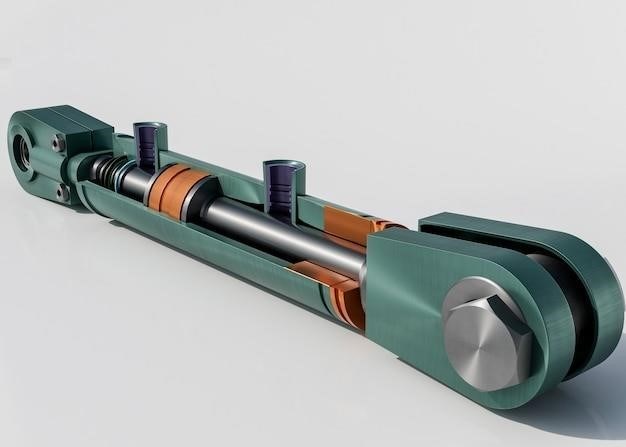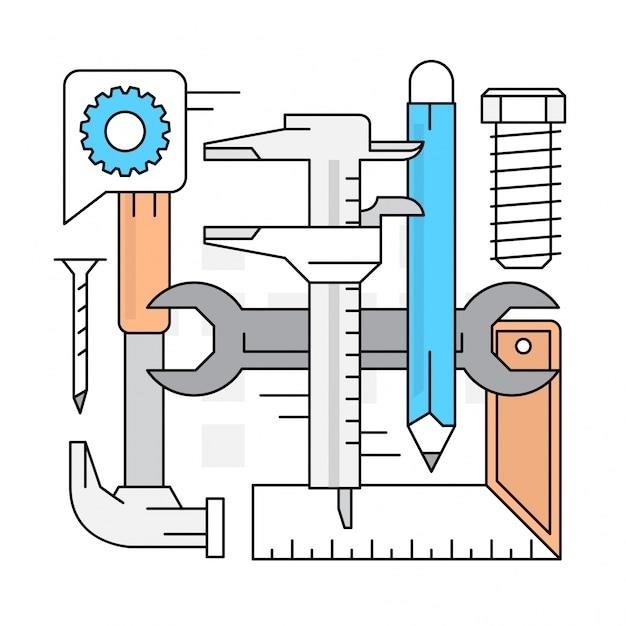manual linear actuator
Manual Linear Actuators⁚ A Comprehensive Guide
Manual linear actuators are mechanical devices that convert rotational motion into linear motion. They are typically used in applications where a precise amount of force or motion is required, such as in industrial machinery, medical equipment, and automotive systems. Manual linear actuators are typically operated by hand, using a hand crank or other manual mechanism. They are a reliable and cost-effective option for many applications.
Introduction
In the realm of mechanical engineering, linear actuators play a crucial role in transforming rotary motion into linear movement, facilitating a diverse range of applications. Among these actuators, manual linear actuators stand out as a reliable and cost-effective solution for scenarios where precise control and force are paramount. These devices, operated by hand using a crank or other manual mechanism, offer a simple yet effective means of achieving linear motion without the need for external power sources.
Manual linear actuators are often employed in situations where electrical power is unavailable or impractical, or where the application demands precise control over the movement. They find widespread use in industrial settings, medical equipment, automotive systems, and various other industries. The versatility of manual linear actuators stems from their ability to generate significant force, making them suitable for tasks that require substantial effort. Their compact design and ease of operation contribute to their popularity across a spectrum of applications.

This comprehensive guide delves into the intricacies of manual linear actuators, providing a detailed exploration of their types, applications, advantages, components, selection criteria, and concluding with a summary of their significance in the field of mechanical engineering. By understanding the principles behind these devices, their strengths, and limitations, engineers and designers can effectively leverage their capabilities in various applications, optimizing efficiency and performance in their respective fields.
Types of Manual Linear Actuators
Manual linear actuators come in a variety of configurations, each designed to meet specific application requirements. The most common types include⁚
- Screw-driven actuators⁚ These actuators utilize a threaded screw to convert rotational motion into linear motion. They are known for their high efficiency, precision, and load-carrying capacity. Screw-driven actuators are widely used in industrial applications, such as machine tools, material handling systems, and assembly lines.
- Rack-and-pinion actuators⁚ These actuators employ a rack and pinion gear system to translate rotational motion into linear motion. They offer a high force output and are suitable for applications where high speeds are required. Rack-and-pinion actuators are commonly found in automotive steering systems, industrial machinery, and robotics.
- Ball-screw actuators⁚ Similar to screw-driven actuators, ball-screw actuators utilize a threaded screw, but with the addition of recirculating ball bearings. These bearings reduce friction and wear, resulting in higher efficiency and smoother operation. Ball-screw actuators are often preferred for applications requiring high precision and durability, such as aerospace and medical equipment.
- Worm-gear actuators⁚ These actuators utilize a worm gear and a worm wheel to convert rotational motion into linear motion. They offer high torque output and are suitable for applications requiring high load-carrying capacity. Worm-gear actuators are commonly used in heavy-duty machinery, such as cranes and hoists.
The choice of manual linear actuator type depends on factors such as the required load, speed, precision, and operating environment. Each type offers unique advantages and disadvantages, and careful consideration of these factors is essential for selecting the most suitable actuator for a given application.
Applications of Manual Linear Actuators
Manual linear actuators find widespread use across various industries, contributing to the smooth operation of numerous systems and machines. Some of the most notable applications include⁚
- Industrial Machinery⁚ Manual linear actuators are essential components in industrial machinery, playing crucial roles in positioning, adjusting, and controlling various processes. They are used in machine tools, material handling systems, assembly lines, and other manufacturing equipment, ensuring precise movement and operation.
- Medical Equipment⁚ In the medical field, manual linear actuators are employed in a wide range of equipment, including hospital beds, operating tables, and medical imaging systems. They enable smooth and controlled movement of these devices, facilitating patient care and medical procedures.
- Automotive Systems⁚ Manual linear actuators are integral parts of automotive systems, such as power seats, sunroof mechanisms, and tailgate lifts. They provide convenient and effortless operation of these features, enhancing driver and passenger comfort.
- Aerospace⁚ In aerospace applications, manual linear actuators are used in aircraft control systems, landing gear mechanisms, and other critical components. Their durability, reliability, and precision are essential for ensuring safe and efficient aircraft operation.
- Robotics⁚ Manual linear actuators are employed in robotics, particularly in industrial robots and research robots. They provide precise and controlled movement of robotic arms and other mechanisms, enabling them to perform complex tasks and operations.
These are just a few examples of the numerous applications where manual linear actuators play vital roles. Their versatility, reliability, and cost-effectiveness make them an essential component in a wide range of industries and applications.
Advantages of Manual Linear Actuators
Manual linear actuators offer a compelling combination of benefits that make them a preferred choice in various applications. Their advantages include⁚
- Reliability⁚ Manual linear actuators are inherently reliable due to their simple mechanical design with minimal moving parts. They are less susceptible to failure compared to electric or pneumatic actuators, which rely on complex electrical or pneumatic systems. This reliability is particularly important in critical applications where downtime can be costly.
- Cost-Effectiveness⁚ Manual linear actuators are generally more cost-effective than their electric or pneumatic counterparts. Their simple design and construction minimize manufacturing costs, making them an attractive option for budget-conscious applications.
- Simplicity⁚ Manual linear actuators are straightforward to operate, requiring no complex electrical or pneumatic systems. They are easy to install and maintain, minimizing the need for specialized skills or equipment.
- Safety⁚ Manual linear actuators provide a safe and controlled method of operation. They are typically equipped with safety features such as manual overrides and overload protection, minimizing the risk of accidents or injuries.
- Durability⁚ Manual linear actuators are known for their durability and longevity. Their robust construction and minimal moving parts contribute to their ability to withstand harsh operating environments and heavy loads.
- Emergency Operation⁚ In the event of a power outage or system failure, manual linear actuators can still be operated manually, ensuring continued functionality in critical situations.
These advantages make manual linear actuators a valuable choice for a wide range of applications, particularly those where reliability, cost-effectiveness, simplicity, and safety are paramount.
Components of a Manual Linear Actuator
Manual linear actuators are comprised of several essential components that work together to convert rotational motion into linear motion. These components include⁚
- Housing⁚ The housing is the main structural component of the actuator, providing support and protection for the internal mechanisms. It is typically made of durable materials such as aluminum or steel, depending on the application’s requirements.
- Lead Screw⁚ The lead screw is a threaded rod that converts rotational motion into linear motion. It is typically made of steel or other wear-resistant materials. The pitch of the lead screw determines the linear travel per revolution.
- Nut⁚ The nut is a threaded component that engages with the lead screw, allowing it to move along the screw’s axis. It is typically made of bronze or other wear-resistant materials, ensuring smooth and efficient operation.
- Bearing⁚ Bearings are used to reduce friction and wear between the moving components of the actuator. They are typically ball bearings or linear bearings, providing low friction and high load capacity.
- Handwheel⁚ The handwheel is the manual input device that rotates the lead screw. It is typically made of a durable material such as plastic or metal, and its size and design are optimized for ease of use.
- Coupling⁚ The coupling connects the handwheel to the lead screw, transmitting the rotational motion from the handwheel to the lead screw. It is typically made of a durable material such as steel or aluminum, ensuring smooth and efficient power transmission.
- End Stop⁚ End stops are used to limit the actuator’s travel range, preventing damage to the actuator or the connected mechanism. They can be mechanical or electrical, depending on the application’s requirements.
These components work in concert to provide a reliable and efficient method of linear motion, making manual linear actuators a versatile and effective solution for a wide range of applications.
Manual Linear Actuator Selection Criteria
Selecting the right manual linear actuator for your application requires careful consideration of several key factors to ensure optimal performance and reliability. Here are some crucial selection criteria⁚
- Load Capacity⁚ The actuator must be capable of handling the maximum load it will be subjected to. Consider the weight of the object being moved, as well as any additional forces that may be applied.
- Stroke Length⁚ The stroke length refers to the total distance the actuator can travel. Choose a stroke length that is sufficient for the required movement, allowing for adequate clearance and preventing the actuator from reaching its end stops prematurely.
- Speed⁚ The speed of the actuator, measured in millimeters per second or inches per minute, is determined by the lead screw pitch and the rotational speed of the handwheel. Select a speed that is appropriate for the application, balancing speed with accuracy and control.
- Accuracy⁚ The accuracy of the actuator refers to its ability to reach a specific position with minimal deviation. This is particularly important for applications requiring precise positioning, such as in machine tools or medical equipment.
- Environment⁚ The operating environment, including temperature, humidity, and potential exposure to contaminants, must be considered. Select an actuator made of materials that are resistant to the specific environmental conditions.
- Mounting⁚ The mounting method must be suitable for the application. Choose an actuator with mounting options that are compatible with the existing structure or equipment;
- Cost⁚ The cost of the actuator is an important consideration, especially when working within a budget. Compare prices from different manufacturers and consider the long-term cost of ownership, including maintenance and repair.
By carefully evaluating these criteria and considering the specific requirements of your application, you can choose a manual linear actuator that will provide reliable and efficient operation for years to come.
Manual linear actuators offer a reliable and cost-effective solution for a wide range of applications requiring linear motion. Their simple design, minimal moving parts, and manual operation contribute to their durability and low maintenance requirements. However, it is crucial to carefully select the right actuator for your specific needs, considering factors such as load capacity, stroke length, speed, accuracy, environment, mounting options, and cost;
When choosing a manual linear actuator, it is essential to consult with a reputable supplier who can provide expert advice and guidance on the best options for your application. By selecting the right actuator, you can ensure optimal performance, reliability, and longevity, minimizing the risk of malfunctions or premature failure.
In conclusion, manual linear actuators are versatile tools that can be used in various industries. Their ease of use, low maintenance requirements, and cost-effectiveness make them a valuable asset for engineers and designers seeking reliable and precise linear motion solutions. With careful consideration of the selection criteria and expert guidance, you can find the ideal manual linear actuator to meet the specific demands of your project.
